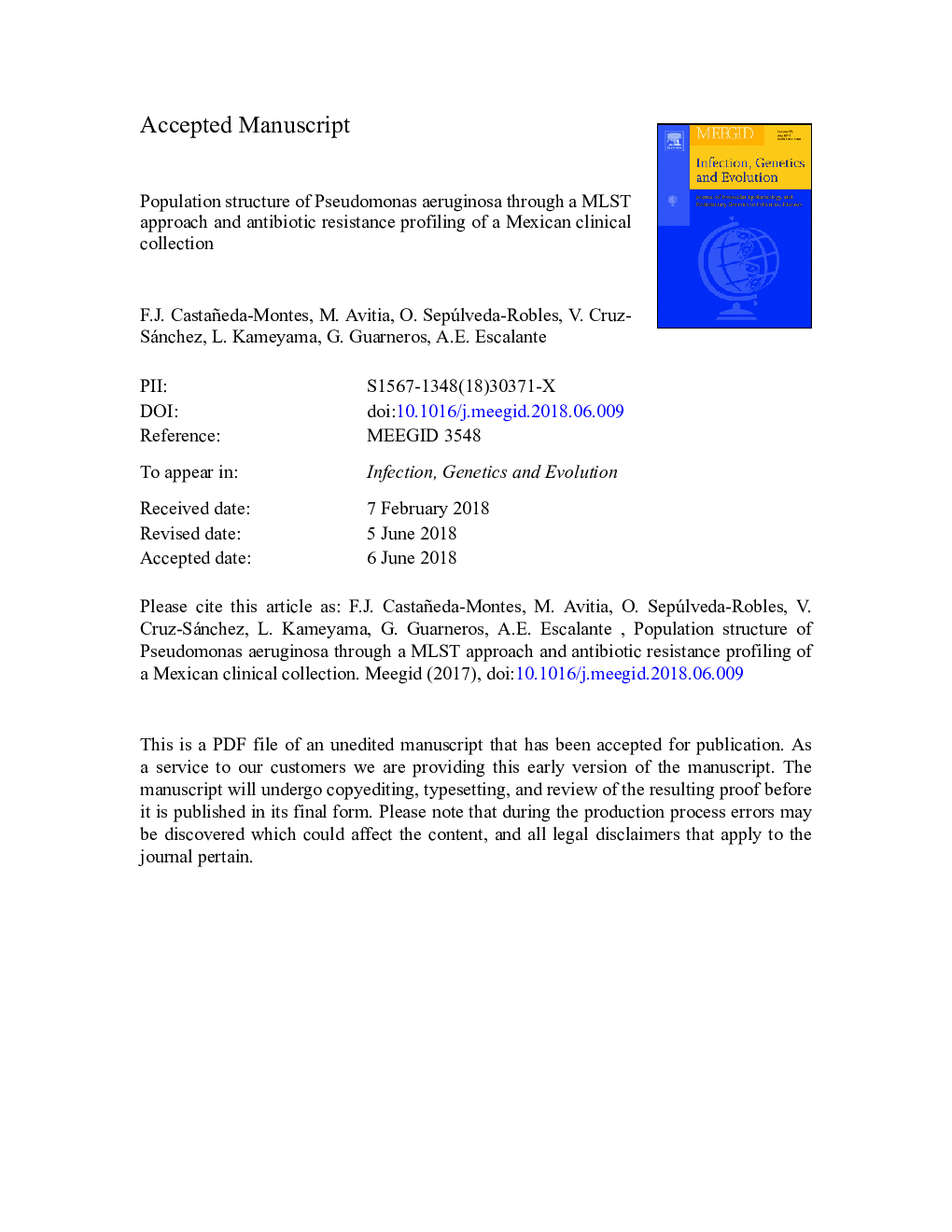| Article ID | Journal | Published Year | Pages | File Type |
|---|---|---|---|---|
| 8646473 | Infection, Genetics and Evolution | 2018 | 44 Pages |
Abstract
Pseudomonas aeruginosa is one of the most important pathogens worldwide. Population genetics studies have shown that the P. aeruginosa population has an epidemic structure with highly conserved clonal complexes. Nonetheless, epidemiological studies of P. aeruginosa have been historically absent or infrequent in developing countries, in which different medical treatments, conditions and infrastructure may have an impact in population dynamics and evolutionary outcomes, including antibiotic resistance profiles. In this study we contribute to fill this gap by analyzing 158 P. aeruginosa isolates from the most extensive nosocomial collection in Mexico City. We investigated the population genetic structure through a MLST approach together with a classical microbiology antibiotic resistance profiling, one of the associated concerns in the evolution of this pathogen. On the one hand, our results are in accordance with previous studies on the epidemic structure of P. aeruginosa, as well as the existence of three main phylogroups, that are not related to environmental parameters. On the other hand, antibiotic resistance profiles indicate higher prevalence in our sample of multi drug resistant (75.15%), extremely drug resistant (17.72%) and pan-drug resistant (9.49%) than resistance reported in developed countries. It is important to reflect on the causes that make less developed countries hotspots of antibiotic resistance, considering the multifactorial aspects of the socio-political context of such countries that include, but are not restricted to, public policy implementation and enforcement regarding access to antibiotics, as well as health care personnel education and other obstacles related to poverty and unequal access to health services and information.
Related Topics
Life Sciences
Agricultural and Biological Sciences
Ecology, Evolution, Behavior and Systematics
Authors
Castañeda-Montes F.J., Avitia M., Sepúlveda-Robles O., Cruz-Sánchez V., Kameyama L., Guarneros G., Escalante A.E.,
